 |
North
High School Wall of Honor
Lyndon Leroy Sheldon
Class of June, 1949 |
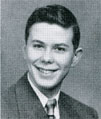 |
 |
| Research
done by Claradell Shedd, Class of 1953. |
|
Lyndon graduated from North High in the June, 1949 class. At the time
of his military entry, his next of kin was Mrs. Mollie (George Glenn)
Sheldon, located at 3121 Columbia Street, Des Moines, IA. His serial
number is 49630A. |
| Lyndon Leroy Sheldon |
 |
| Year |
x |
Rank |
x |
Status |
 |
| 1946-1949 |
x |
Employed |
x |
Worked at (1) Oliphant Pharmacy,
844 Hull Avenue, Des Moines, IA. It was Carlson Drug, then Oliphant
Pharmacy, then Johnson Pharmacy. (Fred L. Oliphant, Don Johnson) |
| June, 1949 |
x |
Graduated |
x |
Graduated from North High, Des Moines,
IA |
| 1949-1954 |
x |
Student |
x |
(2) Iowa State College,
Ames, IA. (27 Aug 1954) Degree in math. In ROTC, upon graduation,
commissioned in US Air Force as a 2nd Lieutenant. |
Aug 27,
1954-
Feb 15, 1955 |
x |
Employed |
x |
(3) Texas
Instruments, Houma, LA doing seismic shooting offshore examining
for favorable areas for oil drilling. Group was called Geophysical
Services, Inc. |
| February
15, 1955 |
x |
US Air Force
2nd Lt |
x |
(4) Pre-flight at Air
Education and Training Command, Lackland Air Force Base, TX |
| April, 1955 |
x |
Training |
x |
Navigation School
(Air Training Command), Ellington AFB, Houston, TX for basic navigation
training |
| Dec 26,1955 |
x |
Personal |
x |
Married Edith I. Gossner in Darlington,
WI |
| May, 1956 |
x |
Training |
x |
(5) Connally AFB (Air Training Command),
Waco, TX. for interceptor training |
| Sept, 1956-Dec. 1956 |
x |
Training |
x |
(6) Moody AFB, Valdosta,
GA for combat crew training |
Dec.
1956-
Aug 1959 |
x |
US Air Force/
1st Lt |
x |
(7) Presque Isle
AFB, Presque Isle, ME. Radar observer in F89 Interceptor aircraft.
75th Fighter Interceptor Squadron, 23rd Fighter Group. The F-89D
had a two-man crew, the pilot and the RO. The armament consisted
of 104 folding fin aerial rockets. |
Aug 1959-
June, 1961 |
x |
US Air Force/ Capt/ Education |
x |
Graduate School of Engineering, (8)
Ohio State University. Columbus, OH. Master's in geodetic science |
June, 1961-
June, 1964 |
x |
US Air Force/
Capt |
x |
(9) Hanscom AFB, Bedford, MA for
scientist, other work. Geodetic research officer. Working at Air
Force Cambridge Research Laboratory. |
| 1965 |
x |
Personal |
x |
Began a concerted interest/effort
in collecting Lindbergh memorabilia and books on Charles Lindbergh.
Vantage; May/June, 2000 issue mentions this interest by Lyndon
and Bob Arehart of Illinois. See replica of Charles A. Lindbergh
clock below. |
June, 1964-
June, 1967 |
x |
US Air Force/
Capt/Maj |
x |
(10) Charleston AFB, Charleston,
SC. Radar intercept officer in F101B aircraft. 444th Fighter Interceptor
Squadron, Washington Air Defense Sector. Photo taken at Dispersal
Operating Base in Wilmington, NC in 1966. The F-101B Voodoo Fighter
Interceptor aircraft was a twin-engine, two-seat, supersonic product
of McDonnell Aircraft. |
| April, 1967 |
x |
Training |
x |
Tyndall AFB, FL. One week of Jungle
Training |
| Aug 1968 |
x |
Training |
x |
Fairchild AFB, Spokane, WA. Survival
Training. |
June, 1967-
Sept 1969 |
x |
US Air Force/
Maj |
x |
Mathematician at Computer Programming
and Analysis Center, Headquarters, Air Defense Command, Colorado
Springs, CO |
Oct 1969-
Sept 1970 |
x |
US Air Force/
Maj |
x |
(11) Phan Rang Air Base, Republic
of Vietnam. Instructor/navigator in AC-119K Stinger Gunship. 18th
Special Operations Squadron, 14 Special Ops Wing, 7th Air Force.
137 combat missions in South Vietnam and Laos. Flew some missions
out of Phu Cat Air Base, Danang Air Base, Tan Son Nhut, Vietnam
and Udorn, Thailand |
| Nov 1969 |
x |
US Air Force |
x |
(12) Winners of Great
Transpacific Air Race with AC-119K aircraft |
Sept 1970-
April, 1976 |
x |
US Air Force/ Maj/Lt.Col/Col
|
x |
Headquarters NORAD/Aerospace
Defense Command, Colorado Springs, CO. as Division Chief in Missile
and Space Defense Plans |
April, 1976-
May, 1980 |
x |
US Air Force/
Col |
x |
(13) Francis E. Warren AFB, Cheyenne,
WY as Commander, Geodetic Survey Squadron (GSS). Defense Mapping
Agency. |
May, 1980-
Oct, 1981 |
x |
US Air Force/
Col |
x |
(14) Headquarters NORAD/Aerospace
Defense Command, Colorado Springs |
Octover
31, 1981
|
x |
US Air Force/
Col/Retirement |
x |
Retired from Headquarters
NORAD/Colorado Springs, CO. Awarded the Legion of Merit at retirement |
Nov,
1981-
May, 1983 |
x |
Employment |
x |
(15) Computer Sciences
Corp in Colorado Springs, CO |
May, 1983-
June, 1996 |
x |
Employment |
x |
Colorado Springs, CO: Ford Aerospace
(a division of Ford Motor Company) and two years later we are
sold to Loral. Just before I retired, Lockheed Martin bought Loral.
Same job, same phone number all three firms. |
June, 1996-
2010 |
x |
 |
x |
(16) Retirement: Volunteer for Meals
on Wheels in Colorado Springs, CO |
| 2010 |
x |
Retirement |
x |
Fully retired, but continuing profound
interest as an expert in Charles A. Lindbergh facts and artifacts |
| Present-2013 |
x |
Civilian |
x |
Colorado Springs, CO |
|
|
(5) Connally AFB, Waco, TX
The airport opened May 5, 1942 as Waco Army Air Field and was the
headquarters Army Air Force Central Instructors' School during World
War II. It was deactivated after the war in 1945 but was reactivated
in 1948 as a pilot training base under the Air Training Command. It
was named for Colonel James T. Connally who had been killed in Japan
in 1945. The airport was initially called Connally Air Force Base
but the name evolved to also include his first name.
In 1951, pilot training was discontinued and
replaced with academic and flight training for navigators, radar operators,
and bombardiers, with particular emphasis for those officers slated
for eventual assignment to Strategic Air Command's B-36 Peacemaker
and its ever-increasing fleet of B-47 Stratojets.
Pilot training returned in 1953 and a T-33 advanced
flying school operated in addition to navigator training in B-25s.
| (6) December, 1956
Graduation; F-89; Moody AFB, Valdosta, GA (click
to navigate to larger image) |
 |
 |
 |
 |
 |
 |
 |
 |
 |
December,
1956: This is my graduation class from F-89 training. Included
with graduating pilots and radar observers (RO's) are our
instructor pilots and RO's.
Lyndon Sheldon is in the back row, sixth from the right.
Ford Ruthling is in the back row, fourth from the left
Pete Skinner is in the back row, first from the right
Bill Anders is in the front row, fourth from the right |
|
(7) 1957; Presque Isle; ME.
Radar observer in F89 Interceptor aircraft
75th Fighter Interceptor Squadron, 23rd Fighter Group
(click
to navigate to larger image) |
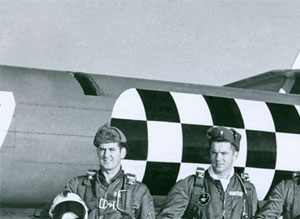 |
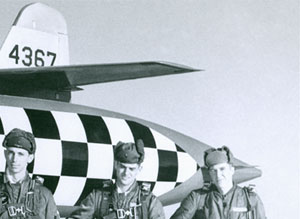 |
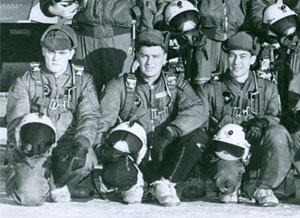 |
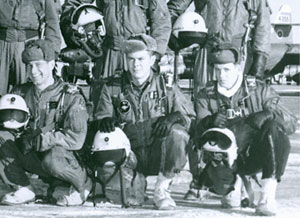 |
D Flight is in
front of F-89D Fighter Interceptor aircraft (all 1st Lieutenants)
Lyndon Sheldon is in front row, second from the right
Ford Ruthling is in the back row, second from the left |
|
75th Fighter Interceptor Squadron
(FIS) (1956-1959)
The Tiger Shark Emblem of the 75th Fighter Interceptor Squadron
(FIS) was based at Presque Isle AFB, Maine. The emblem shows the
shark firing rockets.
I was a Radar Observer (RO) in the 75th FIS from December, 1956
to May, 1959. We flew F-89 D's and H's for the Air Defense Command.
The mission of the Air Defense Command, of which the 75th FIS
was a part, was to protect our nation from air attacks by Soviet
bombers. We kept two airplanes and crews on five-minute alert
at all times. If the surveillance radars detected an unknown aircraft,
an F-89 would be scrambled out of the Alert Hangar, to be airborne
in five minutes or less. The Air Defense Command had about 100
Fighter Interceptor Squadrons based around the United States during
the Cold War. |
 |
Presque Isle, ME
Air Defense Command Use
The airfield was reactivated by the United States Air Force and redesignated
Presque Isle Air Force Base on January 12, 1948 and assigned to the
Air Defense Command (ADC) Eastern Air Defense Force For much of the
1950s, Presque Isle AFB housed ADC fighter-interceptors.
23d Fighter-Interceptor Wing
The 23d Fighter-Interceptor Wing was assigned to Presque Isle on 10
November 1950. The wing flew North American F-86 Sabre, F-51 Mustang,
and F-80 Shooting Stars from Presque Isle with the 74th and 75th Fighter-Interceptor
Squadrons assigned. Its mission was to provide air defense for the northeastern
United States during the Korean War and conduct basic training for about
500 Air Force recruits. The 23 FIW was inactivated February 6, 1952.
On October 16, 1952 the 75th FIS was reassigned to Suffolk County Air
Force Base, New York, where the squadron remained until 1955 before
returning to Presque Isle. The squadron continued operations out of
Presque Isle until later moving to Dow Air Force Base, Maine on 25 June
1959.
In 1953, 57th Fighter-Interceptor Squadron was activated flying Northrop
F-89C Scorpions. In the fall of 1954, the squadron was reassigned to
Keflavik AB, Iceland replacing the 82d Fighter-Interceptor Squadron,
which was, in turn, reassigned to Presque Isle. The 82d FIS operated
only a short time from the base until it was inactivated in-place and
its designation reassigned to Travis AFB, California on 18 August 1955.
Upon the inactivation of the 82d FIS, the 76th Fighter-Interceptor Squadron
was activated, assuming the equipment and personnel of the departed
82d. It remained at the base for just over two years, before also being
reassigned to Pinecastle AFB, Florida on 8 November 1957.
The 74th FIS remained active at Presque Isle until being reassigned
to Thule AB, Greenland in 1954. The 318th Fighter Interceptor Squadron
came back under ADC in August 1954 when it was moved from Thule AB,
Greenland to Presque Isle AFB with F-89Ds. In August 1955 the squadron
moved to McChord AFB, Washington.
The 23d Fighter Wing (Air Defense) was reactivated August 18, 1955,
at Presque Isle with the 75th and 76th Fighter Squadrons assigned directly
to wing. It flew Northrop F-89 Scorpions as part of the Air Defense
Command until again inactivated July 1, 1959.
(9) Air Force Cambridge
Research Laboratory (1961-1964)
Hanscom AFB, Bedford, MA for scientist, other work. Geodetic research
officer. Working at Air Force Cambridge Research Laboratory.
The Air Force Research Laboratory (AFRL) is a scientific research
organization operated by the United States Air Force Materiel
Command dedicated to leading the discovery, development, and integration
of affordable aerospace warfighting technologies; planning and
executing the Air Force science and technology program; and provide
warfighting capabilities to United States air, space, and cyberspace
forces.[1] It controls the entire Air Force science and technology
research budget which was $2.4 billion in 2006.
|
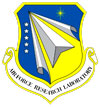 |
(10) 1966: Photo
below taken at New Hanover County Airport
Wilmington, NC; Dispersal Operating Base
detailed from Charleston AFB, Charleston, SC. Radar intercept
officer in F101B aircraft.
444th Fighter Interceptor Squadron, Washington Air Defense Sector
(click
to navigate to larger image) |
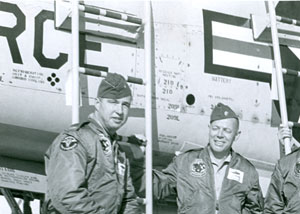 |
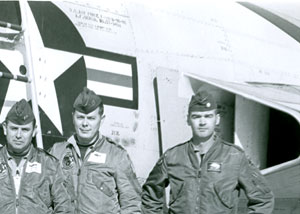 |
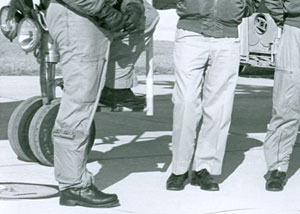 |
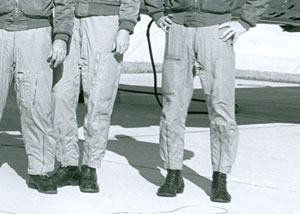 |
New Hanover County
Airport; Wilmington, North Carolina
left to right: Colonel Bill Myers, 444th Commander; Major
Charlie Collins, Dispersal Operating Base Commander; Captain
Jack Sikes; Captain Lyn Sheldon, Major Bob Goad
We had just flown two F-101B's into the New Hanover County
Airport at Wilminton, NC. It was Opening Day for our new
Dispersal Operating Base where we would have F-101B aircraft
on one-hour alert in addition to having two 101's on five-minute
alert at Charleston. |
|
444th Fighter Interceptor Squadron
(1964-1967)
The 444th Fighter Interceptor Squadron was based at Charleston
AFB, South Carolina and was equipped with F-101B Fighter Interceptor
Aircraft.
This was my most fun assignment. Most of the aviators were Southern
boys, which made it a very friendly squadron. It seemed like almost
everyone was a Captain in his early 30's. We had great base housing
and lived two blocks from the Officers' swimming pool. |
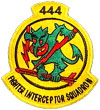 |
(11) AC-119K Stinger
Gunship
Personal comments by Lyndon Sheldon...
The AC-119K Stinger gunships were based at Phan Rang Air Base
and Phu Cat Air Base, both in Vietnam. A third detachment was
based at Udorn in Thailand. The mission of the Phan Rang gunships
was close air support for U.S. Army, U.S. Marines, and Australian
Army troops in South Vietnam. The other two detachments had the
truck destruction mission in Laos. The truck destruction mission
was much more dangerous due to the threat of anti-aircraft fire.
In South Vietnam, the threat to close air support was only small
arms fire, but the truck destruction job was easier -- if it moves,
shoot it. The danger in supporting troops was shooting the wrong
people. We always flew at night, adding another degree of difficulty.
When the navigator radioed his contact on the ground, he always
asked which positions could be marked. The ranges of situations
were:
(1) Both good guys' and bad guys' positions can be marked.
(2) One of the positions can be marked, but not both.
(3)Neither position can be marked.
I was based at Phan Rang and was an Instructor Navigator. All
of the instructional missions were also regular combat missions.
The newly arrived crews had several combat missions while learning
"in country" procedures. |
 |
In 1967, Air Force and ground commanders throughout Vietnam
were clamoring for more gunships. The Air Force wanted more AC-130s
for use against the supply routes, but the need for cargo-carrying C-130s
took precedent over the gunships. Air Force did not want to go back
to the AC-47, since that aircraft did not meet the new gunship requirements
calling for more speed, greater payload capacity, and longer range.
Another aircraft had to be found for the gunship program. Air Force
also wanted to equip some of the new gunships for the truck-hunting
role, which meant heavier weapons and advanced electronic warfare equipment.
The answer lay with the venerable, old Fairchild C-119 Flying Boxcar.
The AC-119K had been in combat evaluation almost a month when it received
a new call sign and thus a new nickname. The 18th Special Operations
Squadron (SOS) reviewed a list of available calls including Gun Shy,
Poor Boy, and Charlie Brown. The men of the squadron dejectedly picked
Charlie Brown as the "least of these evils" but strongly asserted
they deserved better. It turned out later the 366th Tactical Fighter
Wing at Da Nang had an unusual tactical voice call sign-Stinger. The
18th SOS, backed by the 14th Special Operations Wing, put in a claim
for it. The 18th saw Stinger as slightly off the gunship tradition but
a satisfactory compromise, a sign around which unit pride could be built
and a continuation of the "S" alliteration of gunship call
signs. The Seventh Air Force approved the call-sign transfer and the
AC-119K became Stinger on December 1, 1969. Stinger now joined Spectre
in armed reconnaissance of enemy supply lines in Laos and Shadow in
a variety of missions in South Vietnam. Spooky was still around, carrying
the flag of allied nations.
All of the AC-119s were assigned to the 14th Special Operations Wing
headquartered at Phan Rang. The G models were assigned to the 17th SOSq,
while the K models went to the 18th. The 14th SOW thus became the most
unique unit in Southeast Asia with its one of a kind squadrons. They
had the only AC-47 units in the 3rd and 4th SOS; the only two psywar
units in the 5th and 9th SOS; the 20th SOS was the only armed helicopter
unit in the Air Force; plus the only two AC- 119 units. At one time
in 1968, crews of the 14th SOW were flying eight different aircraft
types from ten different bases throughout Vietnam. The 14th SOWq had
been known as the 14th Air Commando Wing prior to August 1, 1968. The
motto of the 14th was 'Day or night, Peace and War'. They flew an average
of 175 missions per day, flying the 200,000th mission in March 1970.
As mentioned earlier, AC-119s had two completely different missions.
The G models were strictly for TIC (Troops in Contact) support and airbase
defense. The K models were used almost strictly in the truck-hunting
role. A couple of books have mentioned that the twin 20mm guns could
destroy most of the Soviet truck types, but were ineffective against
even the lightest of tanks. Unknown to those authors was a mission this
web site author flew on February 28, 1971, where a Stinger gunship was
pitted against North Vietnamese tanks as the Stingers shouldered heavy
support comitments growing out of the South Vietnamese offensive into
Laos (Lam Son 719). The Stinger destroyed eight Russian PT-76 tanks
on one mission. For more on the 8-tank mission visit the stories and
sorties page. The AC-119Ks compiled their superb interdiction record
despite bad weather early in the hunting season and diversions for emergency
support of lima Sites and troops in contact with the enemy. Late in
the war, some of the K models eliminated all the 7.62 armament in favor
of increased ammo supply for the 20mm.
(12) Great Transpacific Air Race (November 1969)
Winners of the Great Transpacific Air Race w/AC-119K
aircraft from Columbus, OH; McCord AFB, WA; Elmendorf AFB, AK; Adak,
Midway Island, Wake Island, Guam, Clark AFB, Phan Rang Air Base. In
photo: left to right: Major Lyn Sheldon, Captain Al Milacek, pilot;
Captain Roger Clancy, nav; Captain Brent O'Brien, co-pilot.(Race took
about 10 days)
(13) Geodetic Survey Squadron
(GSS) (1976-1980)
First formed in 1959 at Orlando AFB, FL to provide for the Air
Force's intercontinental ballistic missile force, GSS today (February,
1980) is located at Francis E. Warren AFB, WY. The squadron has
permanent party detachments at Patrick AFB, FL, the White Sands
Missile Range near Holloman AFB, NM, and Vandenberg AFB, CA.
Since 1972, the GSS has received orders from the Defense Mapping
Agency in Washington, D.C. which also controls the Defense Mapping
School at Fort Belvoir, VA where each military service sends its
novices to study surveying, but geodetic surveyors do not make
maps or help build anything. "There is a lot of mystery about
what we do," admitted Colonel Lyndon L. Sheldon, the GSS
Commander who holds a master's degree in geodetic science from
Ohio State University. Less than one percent is for mapping. We
primarily support weapon systems like intercontinental ballistic
missiles because knowing their exact geodetic position is critical
to their targeting. Basically, we provide geodetic positioning
data worldwide to anyone in the Defense Department and to other
agencies, including the National Aeronautics and Space Administration."
|
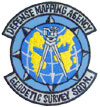 |
(14) Headquarters,
Air Defense Command (ADC) and
North American Aie Defense Command (NORAD)
(1967-1969; 1970-1976; and 1980-1981)
I had three assignments in Colorado Springs with Headquarters,
Air Defense Command (ADC) and North American Air Defense Command
(NORAD).
Over the years, Air Defense Command became Aerospace Defense Command,
and North American Air Defense Command became North American Aerospace
Defense Command.
The 1970-1976 period represents the best assignment in my 27-year
career. I was promoted to Lieutenant Colonel and Colonel while
in the same office. My work was concerned with Missile and Space
Defense Plans. |
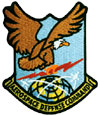 |
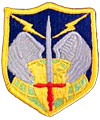 |
| (16) Meals on Wheels |
|
Meals on Wheels offers
frozen home-delivered meals for older persons who are unable to
leave their home to shop or prepare nutritious meals. The meals
are prepared with the special dietary needs of seniors in mind
and are adaptable to a variety of special diets. Complete nutritional
information is available upon request.
Meals on Wheels is a national organization. In Seattle, The Mobile
Market is a home-delivered grocery service for homebound elders.
A number of staple items including canned fruits and vegetables,
canned dinners, soups, rice, noodles, beans and fresh milk, cheese
and bread items are available for eligible persons within the
Seattle City limits who find it difficult to shop for groceries.
Eligible persons who live outside Seattle City limits may order
liquid supplements like Ensure. |
 |
| |
|
| Clock, Lindbergh,
King Collection |
On May
20-21, 1927, Charles Lindbergh literally flew into history when
he crossed the Atlantic Ocean in his Ryan NYP Spirit of St. Louis,
thus becoming the first pilot to fly solo and nonstop from New
York to Paris. This flight made Lindbergh a household name and
catapulted him into fame and celebrity. The objects of popular
culture in the National Collection display everything from ashtrays
to wristwatches reflect the public adulation for Lindbergh and
the powerful commercial response to his celebrity. More than 75
years after the Spirit's historic flight, Lindbergh's name still
has the power help sell manufactured goods.
Gift of the Stanley King Family.
Manufacturer: Aero Light Nov. Co.
Dimensions:
3-D Test: 25.4 x 9.5 x 16.5cm, 1.6kg (10 x 3 3/4 x 6 1/2 in.,
3 1/2lb.)
Materials:
Metal, glass and fabric, felt
Physical Description:
A clock in the center piece of the display is situated below an
airplane that rests on top of a square that houses the clock.
To the left of the clock face is a statuette of the Statue of
Liberty, to the right is the Eiffel Tower. The back of the central
clock housing has the various knobs used to wind and set the two
hands of the clock. A piece of green felt is attached to the bottom
of the clock. |
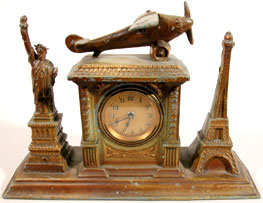
Lyndon has a replica of this clock bearing the
date of 12 June 1928. The original is presently on loan from the
Smithsonian to the Boeing Aviation Hangar at the Steven F. Udvar-Hazy
Center in Chantilly, VA |
|
 |
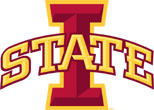 |
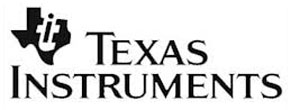 |
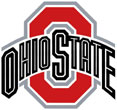 |
(2) Iowa
State College
at Ames |
(1) Oliphant
Pharmacy; (Snoosville) Des Moines, IA
(3) Texas Instruments (Geophysical Services, Inc.) |
(8)
Ohio State University |
|
(4)
Lackland Air Force Base, San Antonio, TX;
(6) Moody AFB, GA; (10) Charleston AFB, SC;
Tyndall Field, FL; Fairchild AFB, Spokane, WA; (13) Warren AFB,
WY |
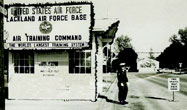 |
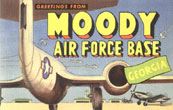 |
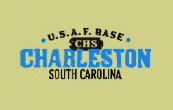 |
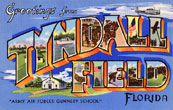 |
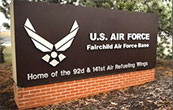 |
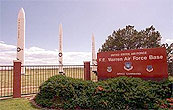 |
|
Below Center: 1965
Scramble at Charleston AFB with Lyn Sheldon and Bob Rigsby
Right: December, 1969: Recruiting Poster; Lyn Sheldon with Gene
Miller
Left: 1976-1980: Colonel Lyn Sheldon, GSS Commander at Francis
E. Warren AFB, Cheyenne, WY
Geodetic Survey Squadron (GSS); Defense Mapping Agency |
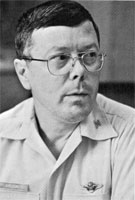 |
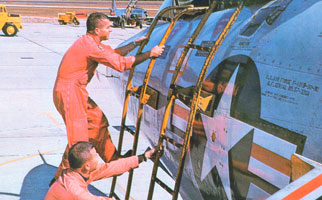 |
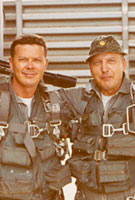 |
|
| Below: Southeast
Asia; F89 Northrop Scorpion; F101B McDonnell Voodoo, AC-119K Stinger
|
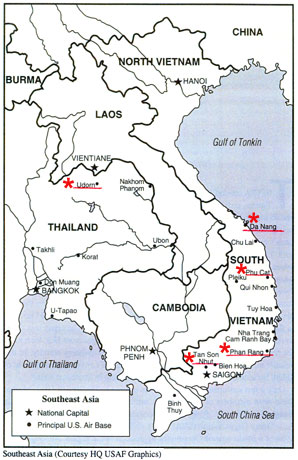 |
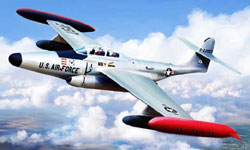 |
 |
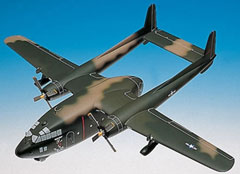 |
|
| (12)
Winners of Great Transpacific Air Race w/AC-119K |
(15)
Computer Sciences Corp, Colorado Springs, CO |
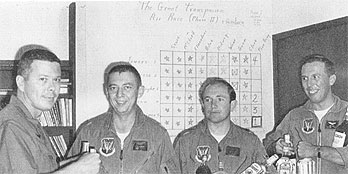 |
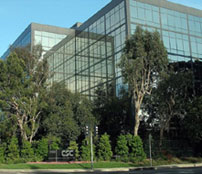 |
|
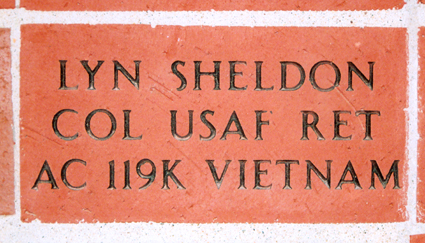 |
above:
Brick Memorial Wall;
Gold Star Museum, Johnston, IA |
|
Lyndon
Leroy Sheldon
Colonel
18th Special Ops Squadron; 14th Special Ops Wing
7th Air Force
United States Air Force |
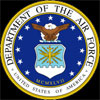
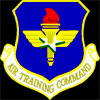
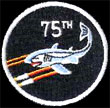
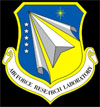
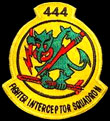

|

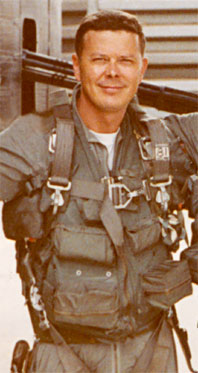

|

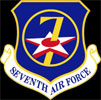

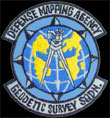

|
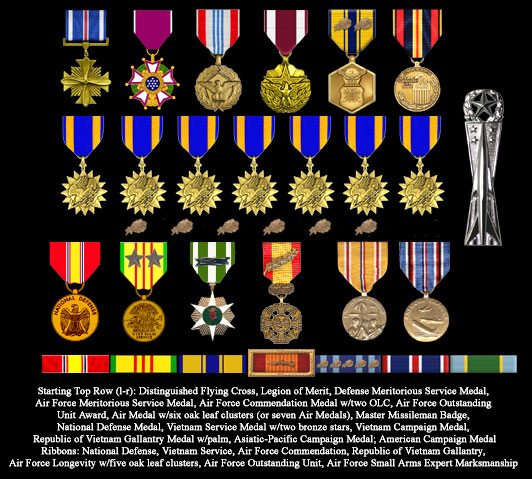 |
|
|
|
| 04/27/13;
Living in Colorado Springs, CO. |
| Music:
"Wind Beneath My Wings" |
Home
|
Back/allyears |
WWI |
WWII |
Korea |
Vietnam |
Afghanistan/Iraq |
Lyrics
|
Refs/Awards |
Contact
©2025-csheddgraphics All rights reserved.
All images and content are © copyright of their respective copyright
owners. |
|





























































